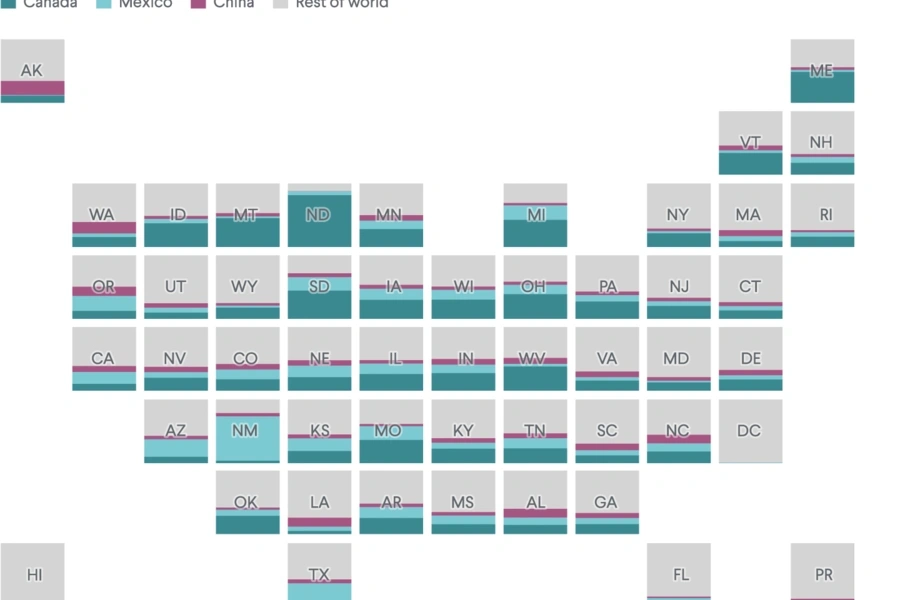Global Trade Policy 2025, tariffs, trumponomics
Trade, Tariffs & Trumponomics
As President Donald Trump enters his second term, trade has become a central pillar of his foreign policy. CFR experts provide timely analysis on the trade-offs and costs involved as they explore the ripple effects on U.S. relations with allies and competitors alike and broader impact on the global economic system.

Can the President Actually Do That?
Ways the President Can Raise Tariffs
| Authority | Key Powers |
|---|---|
| Tariff Act of 1930 (Smoot-Hawley Tariff) 19 U.S.C. § 1338 |
Grants president authority to raise tariffs up to 50 percent of the product’s value after the U.S. International Trade Commission makes a finding that a foreign country has discriminated against U.S. commerce. |
| Trade Expansion Act of 1962 - Section 232 19 U.S.C. § 1862 |
Permits the president to modify imports through tariffs or quotas where there is an identified threat to national security resulting from an investigation pursued by the Department of Commerce. |
| Trade Act of 1974 – Section 122 19 U.S.C. § 2132 |
Permits the president to impose tariffs of up to 15 percent for 150 days (unless extended by Congress) on the basis of “large and serious” U.S. balance of payments deficits. |
| Trade Act of 1974 – 201 Safeguards 19 U.S.C. § 2251 |
Authorizes the president to impose tariffs or take certain other actions if the International Trade Commission finds that a surge in imports is a “substantial cause of serious injury” to a U.S. domestic industry. |
| Trade Act of 1974 – Section 301 19 U.S.C. § 2411 |
Allows USTR, under the president’s authority, to investigate and take action against unfair foreign trade practices. |
| International Emergency Economic Powers Act (IEEPA) 50 U.S.C. § 1338 1701 et seq |
Allows the president to regulate imports in response to an “unusual and extraordinary threat, which has its source in whole or substantial part outside of the United States, to the national security, foreign policy, or economy of the United States.” |
Our Trade Experts
Tariffs Calendar
In Focus
Donald Trump Wants Reciprocity in Trade: Here’s a Closer Look
The president’s plan for reciprocal tariffs sounds good in theory. But there was a reason the United States abandoned the approach a century ago. The gains would be few and the costs enormous.
American Impact
What Trump’s Trade War Would Mean, in Nine Charts
President Trump’s tariffs on Canada, China, and Mexico could upend U.S. trade. These nine charts show what’s at stake, what comes next, and why it matters.

Explaining Trade
What Are Tariffs?
Tariffs are a form of tax applied on imports from other countries. Economists say the costs are largely passed on to consumers.
The Latest Trade News and Analysis
-
President Trump doubled almost all aluminum and steel import tariffs, seeking to curb China’s growing dominance in global trade. These six charts show the tariffs’ potential economic effects.
-
Global trade tensions are boiling over and questions about the United States’ economic future are at the center of the debate. As trade experts question what comes next, it’s important to analyze how the United States got to this point. How have the current administration’s trade policies of today reshaped the global order of tomorrow?
-
Trade and tariffs are a central part of President Donald Trump’s international economic policy. Stay up to date with the Council on Foreign Relation’s calendar of significant trade-related events.
-
The United States has had a trade deficit, meaning we import more than we export, for the past fifty years. But recently the trade deficit has become a front-burner issue for President Donald Trump and a core reason for his administration’s sweeping tariff policy. When do trade deficits become a problem? Is the United States already at the tipping point?
-
The U.S. federal court ruling that President Trump had overstepped his authority on imposing tariffs marked a clear setback for the administration. But any global cheering has been tempered by the recognition that U.S. officials have other tools for authorizing penalties, and that an appellate court has reinstated some tariffs.
-
Editor's note: This article was originally published on May 22, 2025 and does not reflect developments post May 22. When Indian Prime Minister Narendra Modi met U.S. President Donald J. Trump at …
-
-
Despite recent trade deals with China and the UK, U.S. companies and consumers will face significant tariffs, compliance costs, and uncertainty without a more significant pivot from the Trump administration.
-
The Trump administration’s upending of trade norms could help usher in a new economic order—but only if done right.
-
-
-
Greenberg Center for Geoeconomic Studies
Recent decades have witnessed massive growth in ongoing declarations under the International Emergency Economic Powers Act. IEEPA has allowed the president to arrogate dangerously excessive powers over the U.S. economy.
 Online Store
Online Store





























